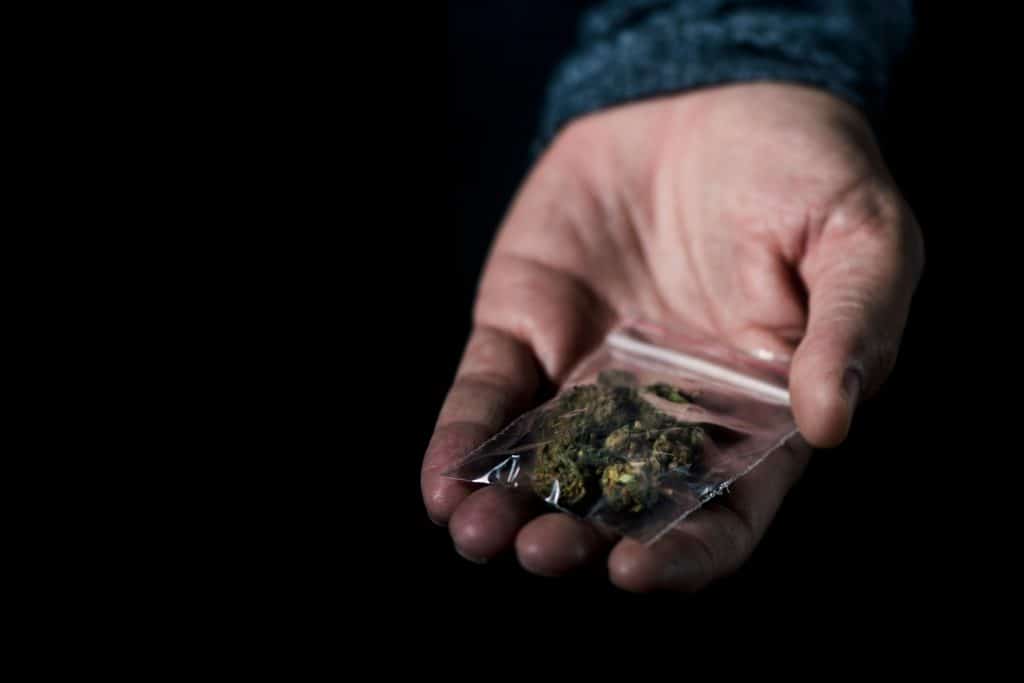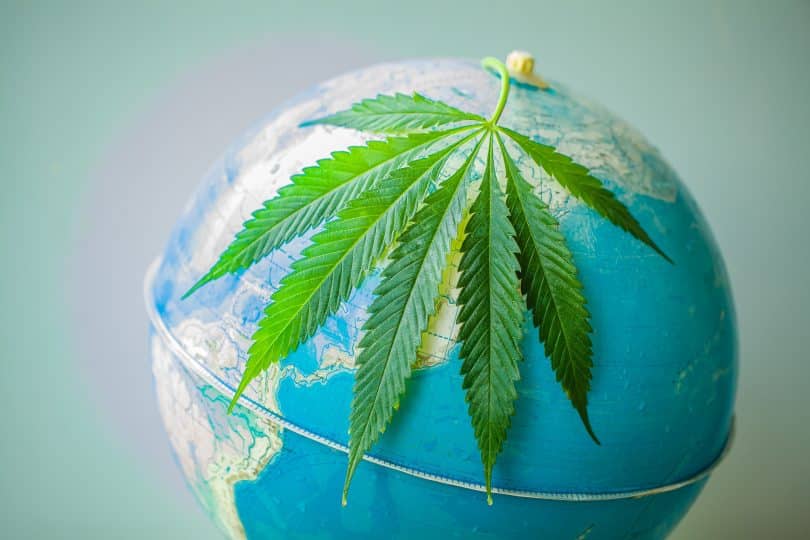A country like Uruguay is interesting to watch because it’s had a recreational cannabis market the longest. Following what goes on there, can elucidate general problems in the industry, as well as show how the country deals with those issues. When it comes to the legal industry vs the non-legal industry, Uruguay is still looking to set up a cannabis tourist market; to help ease the issues of its hard-to-rid black market.
Uruguay and cannabis legalization
Years before Canada or any US state, Uruguay became the first country in the world to officially legalize the recreational use of cannabis. This despite its Schedule I placement in the Single Convention on Narcotic Drugs; a 1961 global treaty that defines the international legality of different compounds. This didn’t sit well with the UN, Uruguay went forward with it anyway.
The idea was first floated by the reining coalition of the time, the Broad Front. From the get-go it proposed having a government run system. On December 10th, 2013, the country’s legislature officially passed its bill, making for a system where the government sells weed directly to its people via pharmacies. The industry didn’t start right away though.
Like it happens much of the time, the initial bill passage didn’t come with a complete set of regulations, and it took more than three years to work these out. The guidelines for the industry were only approved in 2017, at which point the federally regulated sales industry opened. This means, though the legalization is 10 years old this year, the actual sales market is now six. This is still the longest running recreational market, as Canada did not legalize until the following year.
Sweet that you’re here. Head over and sign up to the Cannadelics Weekly Newsletter for direct updates; and a ton of offers on products such as cannabis buds, vapes and other devices, edibles, smoking paraphernalia, cannabinoid compounds (like HHC), and a wide selection more. We’ve got it; come get it!
Some of the regulations involved include: only adults 18 and above can legally access cannabis; adults can grow up to six plants per year, or up to 480 grams worth; sales are done through pharmacies; buyers must be registered; there’s a 40-gram sales max per person per month; all advertising and promotional marketing is banned; and smoking clubs of 15-45 members can be established, that can grow up to 99 plants in a year.
As of 2020 – three years into its market – Uruguay had approximately 41,000 registered users; over 8,000 home-cultivators; 158 cannabis clubs, with total participants numbering 5,000; no access to high THC strains (limit 9%); and as of February of 2020, a standing price of approximately $1.23 per gram.
This last point is incredibly important as it shows how painfully inflated cannabis prices are in other countries like the US, where the government is not in charge of pricing. When we talk about overproduction and prices plummeting, we should remember that in the US, the prices are still well above what Uruguay charges.
Why did Uruguay do this? Besides the understanding that cannabis isn’t dangerous, that it has positive medical and recreational benefits, and that people are going to do it regardless of laws against it; Uruguay had one other reason: it’s huge cannabis black market. Black markets aren’t liked by governments because they’re untaxed by nature, and when considering an industry as large as the cannabis industry, that’s a lot of money lost.
Beyond that, black markets often cause a lot of violence, though how much of that violence comes from within the industry itself, and how much from government interference, varies between locations. Though there’s plenty of competition between operators in a black market, I often wonder how much less destructive we’d view these industries, if not for the bloody government wars waged against them. That’s an article for another time; but the thing to understand here, is that Uruguay wanted to funnel the black market activity into a government-regulated legal market.
Black market issues in Uruguay cannabis industry
Now it’s 2023 and Uruguay has had an operative market for six years. Some things have changed since the 2020 numbers. There are now at least 249 social clubs, consisting of about 7,166 members. There are 28 approved pharmacies in the country, and about 49,600 registered buyers. Approximately 14,000 are registered for home-cultivation. The price in the pharmacies is about $10 per five grams, or about $2/gram. This is still well under what we see as bottom-basement pricing taking over in the US now.
The max THC level is increased to 15% as of December 2022, with the offering of a new ‘gamma’ variety, as per internationalcbc. Prior to this it was 9%. And while it’s reported that pharmacies might adopt a 4th variety by the end of 2023, we don’t know anything about what that means, or if it indicates an even higher THC amount. Since 2019, Uruguay has seen about $20 million enter its economy from medical cannabis exports.
The thing is, not everyone loves this system, and there are problems that lead many people to continue buying from the black market. For one thing, Uruguay doesn’t give a lot of options, and limiting THC is not optimal for many people. The black market still provides more and better options than the regulated system. It also doesn’t require signing up, or a fingerprint scan.
On top of that, many social clubs have waiting lists, meaning people simply don’t have access. As laws only permit from 15-45 people, this isn’t because they’re slow to go through applications; but simply because they can’t break their legal limit, leaving plenty of people who want access, out in the cold. And it’s not like pharmacy buying is a last minute thing. It requires being signed-up, and making an appointment in advance.

A Montevideo social club treasurer and technical manager who goes by the nickname Pulla, put it well when he said of the clubs, that having a waiting list “is an indicator that demand is not satisfied.” He continued, “Many more people want to access the legal market who still cannot.” The reality is, even regardless of limited options in pharmacies; limited access is the bigger killer if the idea is to bring people away from a black market system that already functions well.
According to Uruguay’s cannabis regulatory agency the IRCCA, approximately 27% of residents buy cannabis through legal vendors, which means the grand majority is still a black market industry. Most of the black market weed isn’t even trafficked into the country, so much as sold by non-registered local growers.
About 30% of the illegal market comes from Paraguay, and consists mainly of lower-priced plants called “Paraguayans.” This is according to ORT University professor and Monitor Cannabis project researcher, Marcos Baudean. It indicates that nearly all of the imported products on the black market, are lower-priced than what’s offered legally.
Uruguay and a cannabis tourist market
In Uruguay, the idea of a cannabis tourist market isn’t new, and has already come up several times. Now, in a January 6th ladiaria interview with Juan Ignacio Tastás, the IRCCA executive director, a little more information is given, along with what other improvements might drive up sales. According to Tastás, in response to why the new higher-THC gamma cannabis variety began selling so well after introduction in December 2022:
“I think it responds to the fact that there is a failure in our system to adequately supply what the public that consumes marijuana was requesting.” He continued, “The idea is to continue generating new varieties, there is a variety that we are planning to launch towards the end of next year, and that surely has an average THC level of 15%, that is, it would be a little higher and in the line with what can be obtained in general in the clubs.”
And what of the problem that exists if a person first chooses one of the three: cultivating, buying from a pharmacy, or going to a club; and then decides on a different method of procurement? Apparently there are major access issues when choosing more than one. Says Tastás of this:
“It is also difficult to go from one system to another: if you are a self-cultivator and intend to buy at the pharmacy or go to a club, there are restrictions. These are issues that would be worthwhile for the political sector to reflect on if they continue to be functional.” He goes on to remind: “It must be remembered that if there is a consumer who does not obtain it through the legal channel, he ends up going through the illegal channel.”
And as for a Uruguay cannabis tourist market? The interviewer asked Tastás what he thought of a current bill under investigation at the Tourism Commission of the Chamber of Deputies, which would allow sales to foreigners. Apparently its spoken that social clubs might be the providers of this cannabis. When asked about this, the executive director answered:

“If it is intended to include clubs as a supply element, the origin of the concept should be reversed. Our concern is the analysis that is done to the products.” He continues that “more than 70% of people in the legal market are registered in pharmacies and it is a much easier place or way of access than the club.”
Unfortunately, not anything more was said on the tourism topic in the interview. Nor any further information given as to progress on possible legislation. Though internationalcbc speaks of pharmacies opening a 4th option to tourists (a different strain), and though Tastás indicated this as well; we don’t know anything more specific, or if Uruguay will open this option as part of a cannabis tourist market. Internationalcbc thinks it might.
One possible reason the conversation has been going on so long, is that current president Luis Lacalle Pou isn’t onboard with cannabis legalization in general, and therefore not a proponent of moving forward. However, according to the vice-president of the tourism commission in congress, Eduardo Antonini, who is in the opposition, “It’s a simple formula: if tourism increases, spending increases, employment increases and investments increase. Models like that in California demonstrate the potential.”
Conclusion
Will Uruguay have a cannabis tourist market soon? Probably. Let’s be honest, it’s getting more difficult out there, and if Uruguay really wants to do everything it can to fight its black market and increase sales, it’ll open its market to foreigners. And given how forward thinking the country has been in terms of weed so far, it’ll probably happen pretty soon.
Welcome to the site! Thanks for making your way to Cannadelics.com; a news platform in the cannabis and psychedelics spectrum, bringing you the best in independent coverage. Head our way regularly to remain informed on important stories, and sign up to our Cannadelics Weekly Newsletter, so you’re always up on what’s going down.









